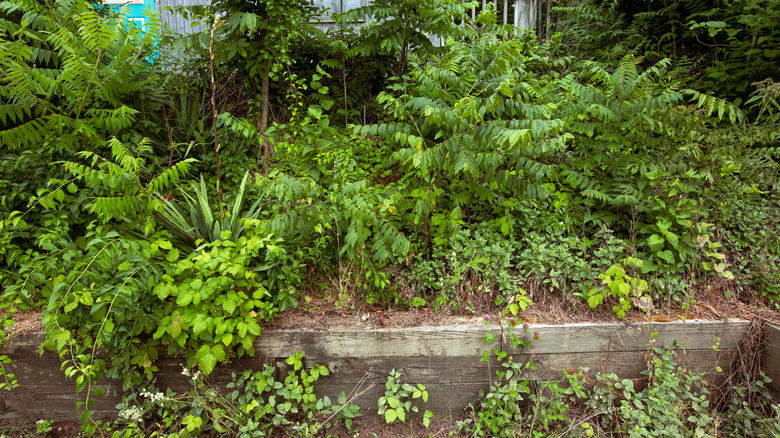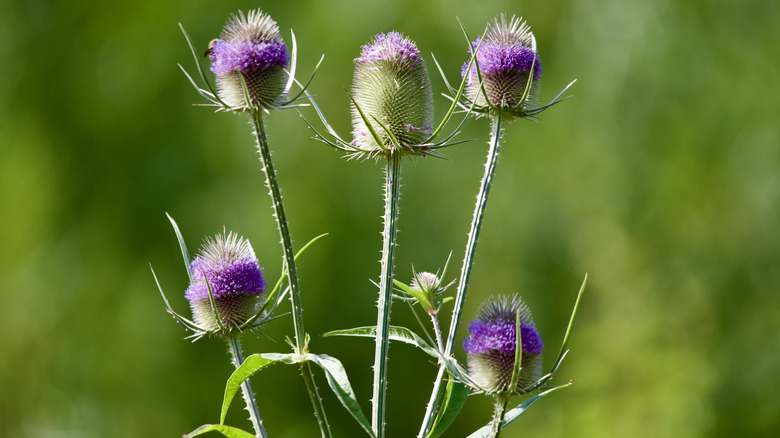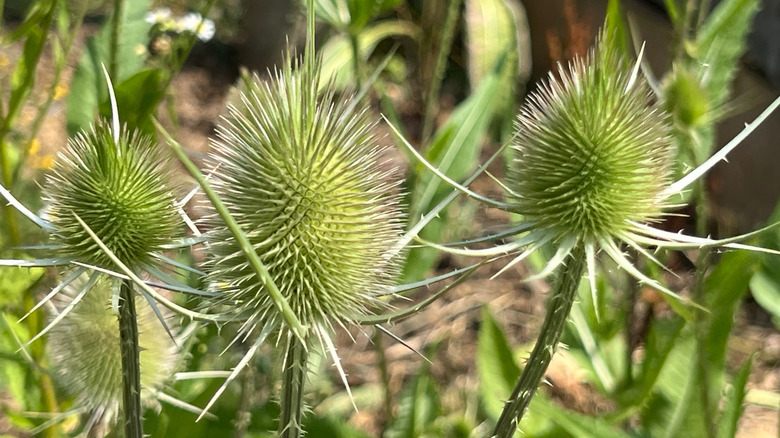The Fast-Spreading Invasive Plant You Don't Want To Find Growing In Your Yard
What's that tall, spiky plant with the unique flower heads that looks like something out of a fairy tale? It might seem harmless, but if it's common teasel (Dipsacus fullonum) or cutleaf teasel (Dipsacus laciniatus), it's a fast-spreading invader that can quickly take over your yard. Originally from Europe and Asia, these plants were introduced to North America as far back as the 1700s. They have prickly flower heads that were once used to brush wool and raise the nap of cloth during textile manufacturing. This history gave the plant its name, from the Old English word tæsan, meaning "to pull apart."
Unfortunately, these plants now grow in open, sunny areas, often along roadsides, fields, rivers, and streams. A single plant can produce thousands of seeds that are capable of growing for years, allowing them to form densely packed groupings that can choke out other plants. Commonly mistaken for thistles, if you find this invasive plant growing in your yard, you should be concerned.
Identifying and distinguishing teasels
Common and cutleaf teasels are both biennials, meaning they have a two-year life cycle. In their first year, they form as a basal rosette of leaves that grow close to the ground, developing a large, fleshy taproot that can extend over two feet deep. This stage of life can last for about a year or more until the plant has stored enough energy to flower. During their second year, they send up a tall, prickly flowering stalk that can reach heights of seven to ten feet. It's during this time that you can identify the difference between the two plant species.
Common teasel has unlobed leaves with toothed margins, and it typically grows purple or lavender flowers. Cutleaf teasel has deeply lobed leaves and produces white flowers. Both have a unique characteristic where the opposite leaves on the stem fuse at their bases, forming a cup that can hold water. The seed heads that remain after the plant dies are stiff, spiny, and can last throughout the winter.
How to control this invasive species
Controlling teasel needs a careful approach to prevent new seeds from being dropped into the soil. Because teasels produce so many seeds and have such deep roots, just mowing them won't work since the plants can regrow and flower, sometimes even producing shorter stalks below the height of a mower blade. For fewer infestations, the best method is to manually remove the plants by hand-pulling or digging them up. Be sure to get rid of as much of the taproot as possible to prevent it from resprouting.
If the plant has already started to flower, the entire stalk and flower head should be cut off, bagged, and thrown away. This prevents the seeds from maturing on the stalk, which can still happen even if the plant is cut from the root. For larger areas of growth, herbicide treatments are recommended. These can be applied to the rosettes in the fall or early spring, when other plants are dormant, to minimize harm to the surrounding vegetation. Because seeds can remain in the soil for many years, it's important to monitor the area where they were removed and continue treatment as needed to fully get rid of the invasive plants.


